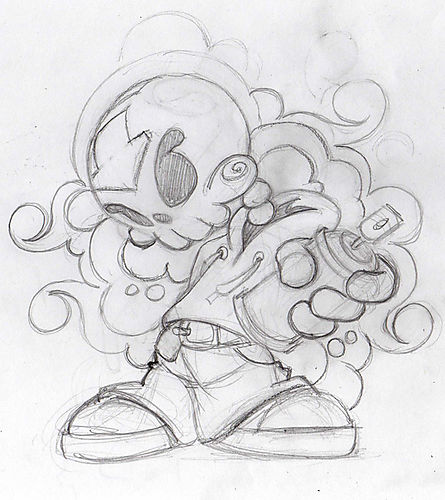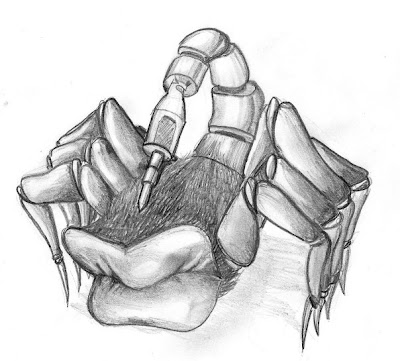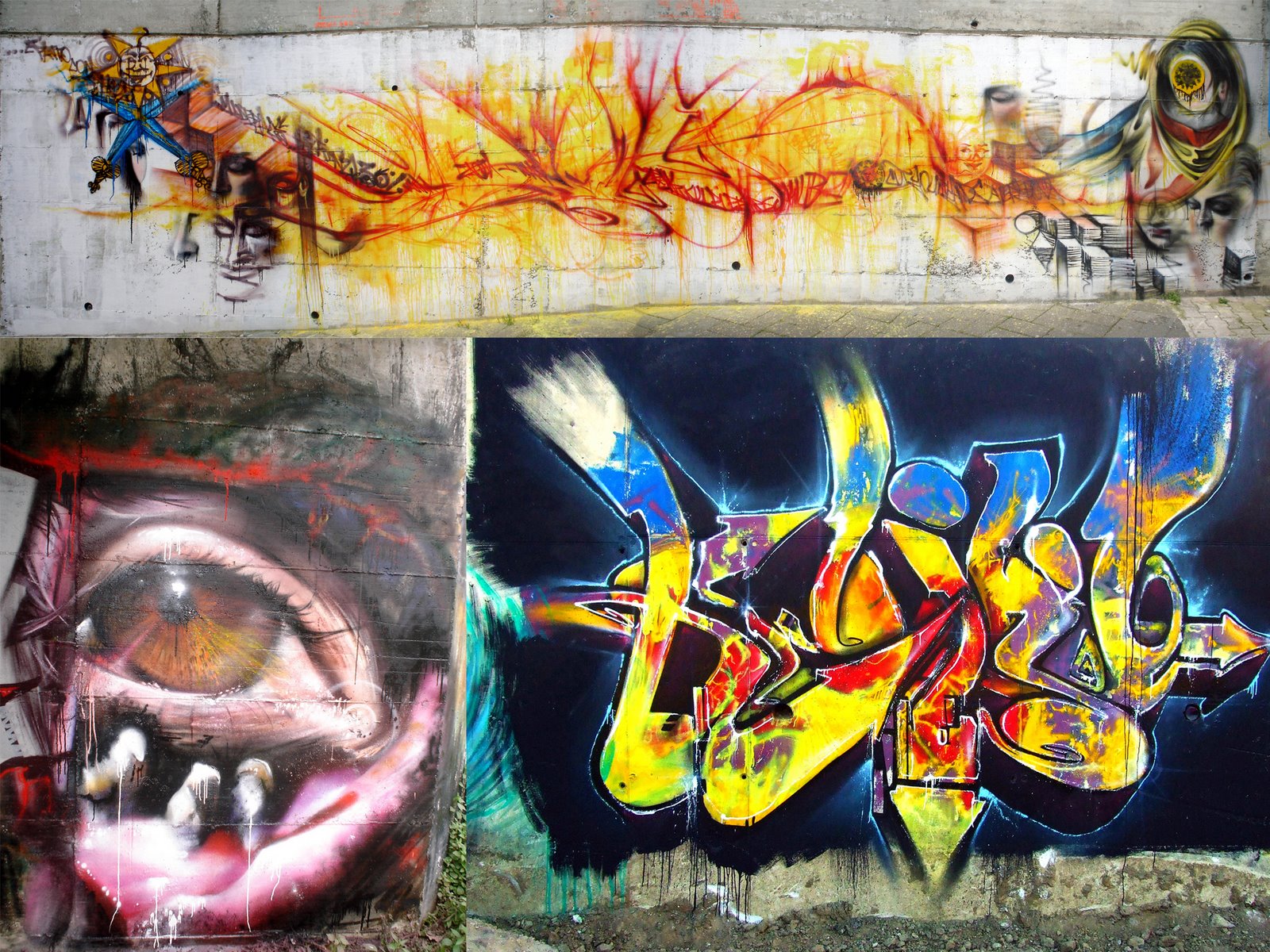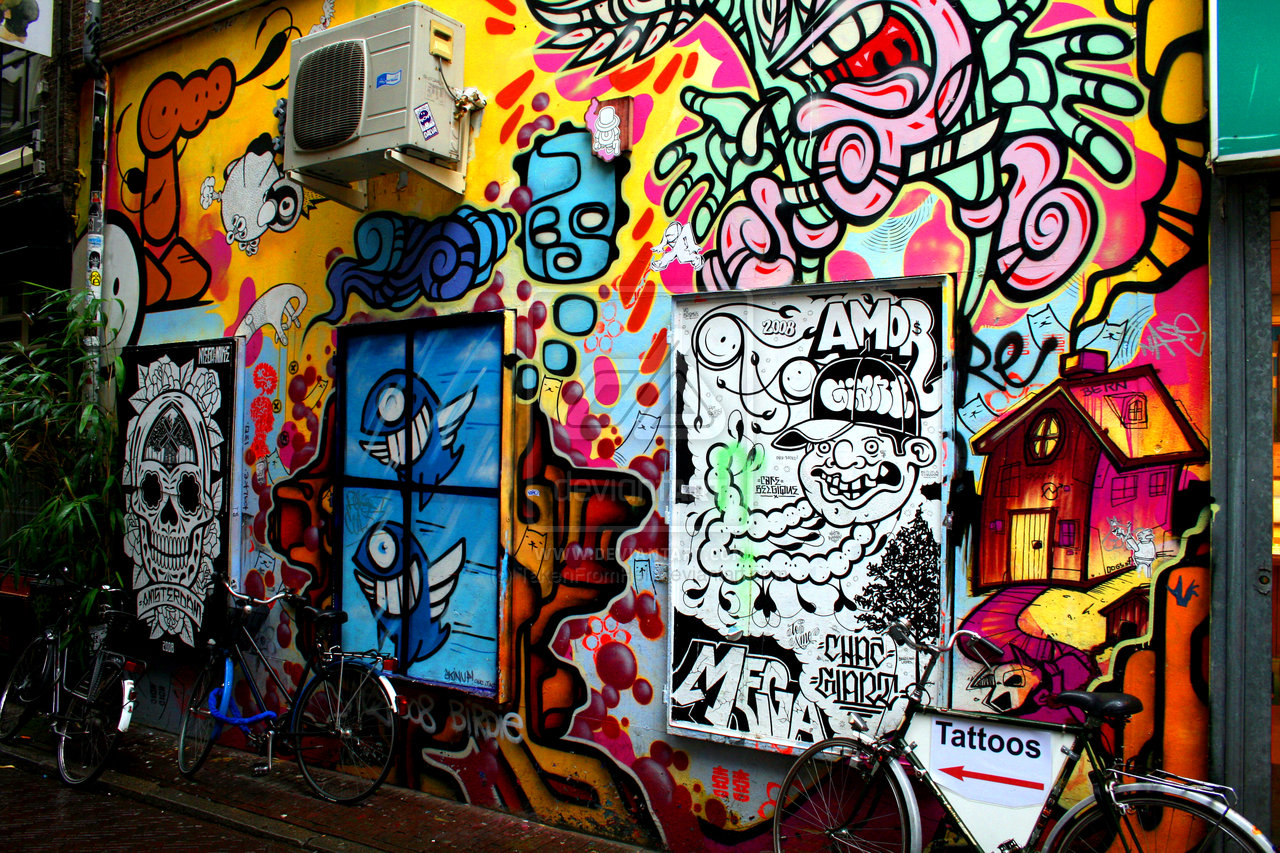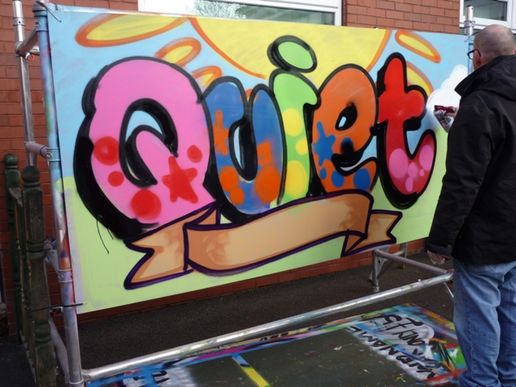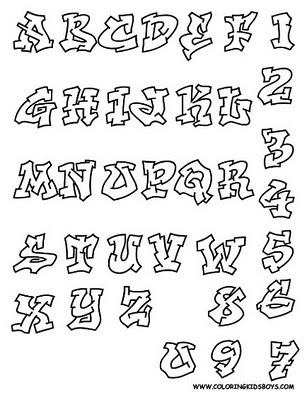Graffiti sketches is where most newcomers begin but really you should start by asking yourself - graffiti - what does it really mean to you? Most people see it as something that emerged only in modern society, scribbled by urban youth on railway bridges. However, its use can be traced back to ancient civilisations, such as the ancient Egyptians whose hieroglyphics could be considered a form of what we know today as graffiti. One can even say that graffiti or writing, as it is more commonly known, dates back to the origins of mankind itself, when Neanderthal man's sense of his environment was expressed through cave drawings.
Although graffiti art seems to have been part of the mainstream for ages, it was not until the 1970s that graffiti reinvented itself with a more modern term named writing, which first took root in the United States and later spread across the water to Europe.
The last decade has seen writing really take hold of the global art scene with celebrities emerging from the hub of graff artists around the world. It is only now that you hear about graffiti events like Secret Wars and people like American actress Angelina Jolie forking out £100,000 for an original piece by the notorious Bristol-born artist Banksy. Also, a new record was recently set when a piece went for a massive £280,000.
Graffiti art is the new cool, with hundreds of companies in the last few years jumping on the street art bandwagon. Graffiti is no longer just a shunned art form, yet it still manages to stay true to its origins by remaining accessible to the younger generation. Graffiti it seems is here to stay.





